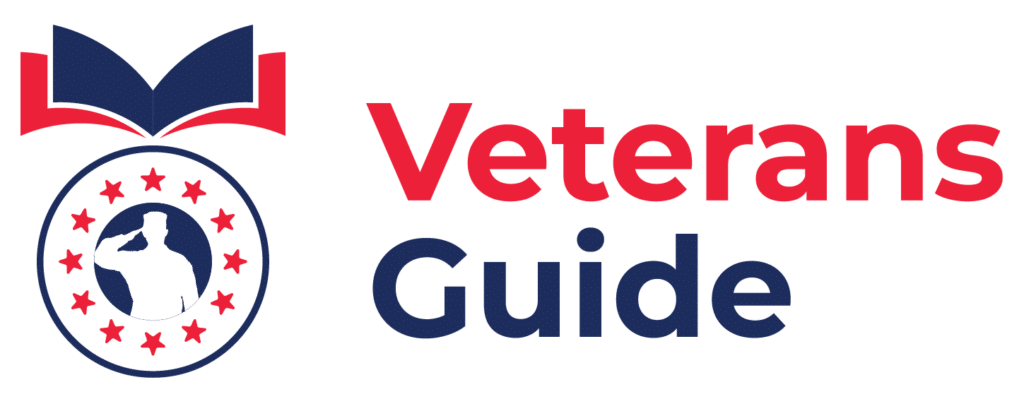Chapter 35 VA Benefits
The VA offers education and job training benefits to children and spouses of disabled, captured, or deceased service members with the Survivors’ and Dependents’ Educational Assistance program, otherwise known as Chapter 35. Through the DEA program, recipients get a monthly payment to help pay for their education and training expenses. Veterans Guide explains how Chapter 35 benefits work, including how to qualify for them and what benefits you may receive.
- Chapter 35 VA benefits provide educational and job training support to spouses and children of disabled, captured, or deceased service members, offering monthly payments to cover expenses.
- Eligibility for Chapter 35 benefits hinges on the service member’s status (e.g., suffering a permanent and total service-connected disability or being deceased) and the dependent’s criteria, such as age or educational completion.
- Benefits can be applied towards a wide range of educational expenses, including higher education, vocational courses, apprenticeship programs, and more, with rates adjusted annually and varying by enrollment status.
- Unlike the Post-9/11 GI Bill, Chapter 35 benefits are specifically for dependents without a service length minimum and do not automatically transfer from service members to dependents.
What Are Chapter 35 VA Benefits?
The Survivors’ and Dependents’ Educational Assistance Program, or DEA, is also known as Chapter 35 benefits. The VA oversees the DEA program and other benefit options available to disabled, captured, or deceased service members and their dependents.
Chapter 35 VA benefits are available to qualifying spouses and children of disabled or deceased service members. They provide monthly payments to help cover a spouse’s or child’s educational and job training expenses.
You can use Chapter 35 benefits to pay for various educational and job training expenses, including:
- Higher education programs, such as a college or university degree
- Technical or vocational courses
- Completing a high school education or GED
- Apprenticeship or on-the-job training programs
- Career and educational counseling
- College and university entrance exams, such as the SAT, LSAT, or GMAT
- Books and other school supplies
- Licensing and certification classes
The length of time you’ll receive benefits depends on when you became eligible for them.
Chapter 35 Benefits Eligibility and Deadline
To qualify for Chapter 35 benefits, you must demonstrate that you and the veteran or service member meet specific eligibility requirements.
The veteran or service member must meet one of these qualifications:
- Suffers from a permanent and total service-connected disability
- Has died in the line of duty
- Has died from a service-connected disability
- Is captured by a hostile force or deemed missing in action for more than 90 days while in the line of duty
- Is forcibly detained by a foreign entity for more than 90 days while in the line of duty
- Is hospitalized or receiving outpatient treatment for a service-connected permanent and total disability
Dependents applying for Chapter 35 benefits must meet one of the following criteria:
- They are at least 18 years old.
- They have finished high school or secondary education.
You can apply any time after meeting the Chapter 35 VA benefits requirements. However, recipients are subject to age and time restrictions on benefits if the qualifying event occurred before August 1, 2023, and the dependent turned 18 or completed high school before August 1, 2023.
Age limits apply to children who apply for Chapter 35 benefits. Children can begin receiving benefits once they turn 18, but the benefits typically end after eight years.
Chapter 35 Requirements
Once you begin receiving Chapter 35 benefits and start your courses or training, you must stay in good academic standing. The VA may stop your benefits if your educational institution or other recipient reports you for unsatisfactory attendance, conduct, or progress.
While the VA does not require you to meet a specific GPA, it relies on the prescribed standards set by your educational institution to determine whether you maintain compliance. So, if your school uses a pass/fail system to evaluate coursework, receiving a failing grade may hurt your ability to receive future Chapter 35 benefits.
If the VA stops your benefits due to a failing grade, poor conduct, or unsatisfactory attendance, it will only resume them if you can prove that you’ve addressed the cause. For instance, you may need to retake and pass a failed course.
Chapter 35 Benefits Rates
Each year, the VA sets new benefits rates for its DEA program. The rates vary depending on the type of education you seek, the program length, and whether you’re enrolled full- or part-time. Here are the Chapter 35 VA benefits pay scales from 2023, effective until October 1, 2024.
College, University, Trade, and Vocational School Benefit Rates
If you plan to attend a college, university, trade, or vocational school, you may receive the following monthly payments depending on your enrollment status:
| Enrollment Status | Monthly Payment |
|---|---|
| Full-time | $1,488 |
| 3/4-time | $1,176 |
| 1/2-time | $862 |
| Between 1/4-time and 1/2-time | The lesser of $862 or the cost of your tuition and fees |
| 1/4 time or less | The lesser of $372 or the cost of your tuition and fees |
Monthly payments are prorated depending on how many days you are enrolled in a program. For example, if you start school on the 25th of a 30-day month, you’ll receive a partial payment for five days of enrollment. If your tuition and fees are less than your monthly payment rate, you will receive a lump sum payment at the beginning of each term.
On-the-Job and Apprenticeship Training Benefits
Signing up for on-the-job or apprenticeship training also offers monthly benefits. Here’s what you may receive:
| Enrollment Status | Monthly Payment |
|---|---|
| Months 1 to 6 | $945 |
| Months 7 to 12 | $710 |
| Months 13 to 18 | $466 |
| Months 19+ | $237 |
To earn the full monthly payment, you must work a minimum of 120 hours monthly. Notice that your compensation drops the longer your entitlement lasts.
Correspondence and Special Restorative Training
Spouses who enroll in correspondence training, including courses by mail or online, may receive up to 55 percent of the cost of their lessons. Correspondence training benefits are not available to dependent children.
Special restorative training benefits are available to children enrolled in a full-time program and include a monthly payment of $1,488. If you’re eligible for accelerated charges, the VA will pay for tuition and costs that exceed $392 monthly. Note that spouses are not eligible for special restorative training benefits.
Difference Between Chapter 35 and Post 9/11 GI Bill Benefits
The Post-9/11 GI Bill and Chapter 35 both provide education benefits for service members’ dependents. However, there are a few key differences between them.
First, the Post-9/11 GI Bill provides benefits only if servicemembers meet a minimum length of active service requirement. Chapter 35 does not have a service length minimum.
Second, dependents are not automatically eligible for educational benefits under the Post-9/11 GI Bill. They can only receive benefits if a qualified veteran or servicemember decides to transfer them. Conversely, Chapter 35 provides benefits only to dependents, not servicemembers themselves.
Eligibility requirements differ between the Post-9/11 GI Bill and Chapter 35. Specifically, unlike Chapter 35, there is no requirement that the servicemember suffer injury, disability, or death for benefits to be available to a spouse or child under the Post-9/11 GI Bill.
To explore the benefits available under the Post-9/11 GI Bill at your desired educational institution, check out the Post-9/11 GI Bill Comparison Tool.
Chapter 35 Benefits and Housing
Chapter 35 does not provide specific monetary benefits for housing. Instead, recipients get a monthly check they can use toward tuition, books, and other educational costs. Any remaining funds from your benefits can supplement your housing expenses.
Using Chapter 35 Benefits With Other Educational Benefits
The VA stipulates that qualified recipients can only get educational benefits from one program at a time. So, if you qualify for benefits from Chapter 35, the Post-9/11 GI Bill, the Veteran Readiness and Employment program, or the Fry Scholarship, you can’t receive all four simultaneously. Instead, you’ll select the one that best suits your needs and wait for approval from the VA.
There may be other state benefits you qualify for as the spouse or child of a veteran. Check your state’s local veterans department to see what programs are available. Supplementing the educational benefits you receive from Chapter 35 or other federal programs with state benefits may be possible. However, the total benefits you receive likely won’t exceed the total cost of your attendance.
- What Are Chapter 35 VA Benefits?
- Chapter 35 Benefits Eligibility and Deadline
- Chapter 35 Requirements
- Chapter 35 Benefits Rates
- Difference Between Chapter 35 and Post 9/11 GI Bill Benefits
- Chapter 35 Benefits and Housing
- Using Chapter 35 Benefits With Other Educational Benefits
- How To Apply for Chapter 35 Benefits
- VA Disability Appeals
- VA Disability Process
- VA Disability Conditions
- Top 20 VA Claims
- TDIU
- Back Pay Ratings Increase
- Taxability of VA Disability
- Veteran Readiness and Employment (VR&E)
- BDD VA Claim
- VA Disability 5-Year Rule
- How Much Weight Does a C&P Exam Have?
- Nexus Letter
- What is a Protected Veteran?
- Will My Spouse Receive My Benefits if I Die?
- VA Mileage Reimbursement
- VA Death Benefits
- VA Home Loans
- Veteran Finance
How To Apply for Chapter 35 Benefits
There are two ways to apply for Chapter 35 benefits: online or via mail.
To begin an online application, visit the VA’s website. You’ll need some basic information, such as your Social Security number, your sponsor’s Social Security number, and details about the school you plan to attend. You’ll also need your bank account details and information about your prior education.
You can also submit an application by mail using VA Form 22-5490.


